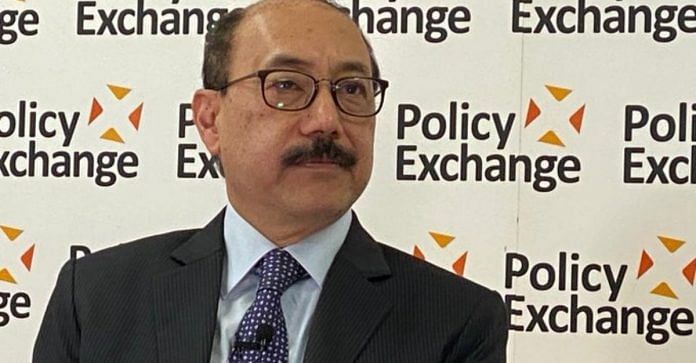New Delhi: Foreign Secretary Harsh Vardhan Shringla is likely to visit Nepal later this month even as ties between New Delhi and Kathmandu are improving after several controversies earlier this year.
During the visit, which is expected to take place in the last week of this month, both sides are likely to finalise a date to formally hold the foreign secretary-level talks on the Kalapani border issue, diplomatic sources told ThePrint.
The final date will, however, be announced when foreign ministers of both nations meet later.
Shringla’s visit is taking place after that of RAW chief Samant Kumar Goel to Kathmandu last month, followed by the visit of Army Chief General M.M. Naravane earlier this month. Both met Nepal Prime Minister K.P.S. Oli.
The contentious issue of the Kalapani region was discussed during both the visits, but the matter has to be discussed formally at the level of the foreign secretaries, in order to reach an amicable solution, Nepal government sources said.
Also read: Mocking Indian emblem, redrawing Nepal map, KP Oli’s adventures are growing
Nepal foreign minister to visit India soon
Shringla’s visit is expected to also pave the way for the much-awaited visit of Nepal Foreign Minister Pradeep Gyawali, who will be coming to New Delhi to meet his Indian counterpart S. Jaishankar, sources in the Nepal government said.
Both ministers will be holding the sixth India-Nepal Joint Commission meeting, which was expected to take place in October.
According to sources, the joint commission, which is the highest-level dialogue mechanism between both the sides, will announce the dates for the border talks.
While Kathmandu had earlier sent repeated requests to New Delhi to hold talks, India did not come up with a date. It again insisted on holding the talks after India released a new political map following the scrapping of Article 370 in Jammu and Kashmir last August.
However, Nepal was upset when Defence Minister Rajnath Singh inaugurated a new, motorable road to Kailash Mansarovar passing through the Lipulekh pass in May.
Following this, the Oli government issued a new political map, which claimed the Kalapani region, Limpiyadhura and Lipulekh — together spread over about 335 sq km — as Nepal’s territory.
India rejected the map and said it will not accept such “artificial enlargement” of territory, thereby stating that the talks on the unsettled boundary issue will take place between foreign secretaries on both sides once the pandemic subsides.
Also read: Kathmandu crossed red lines. India-Nepal relations are entering a deep freeze






